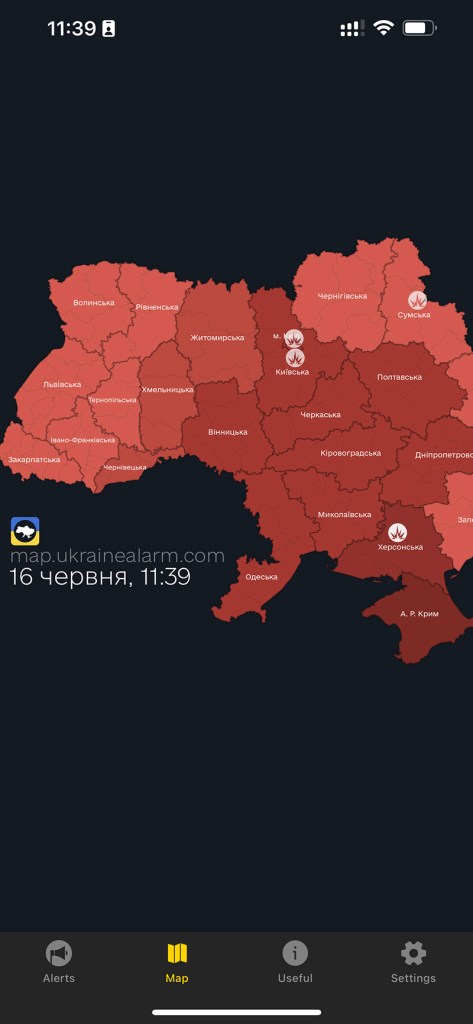UKRAINE: I spent two weeks teaching Mobile Journalism to frontline journalists — reporters who were forced to leave their homes and now live and report from elsewhere in the country.

It was an honor to serve these courageous journalists and upskill them in Mojo techniques.

I was recruited for the “Improving Media Resilience in Ukraine Project” by Jacqueline Dalton, Head of editorial content for Fondation Hirondelle (Switzerland).
Jackie recruited me after attending my #Mojo Masterclass at the International Festival of Journalism in Perugia, Italy.
Between June 9 to 23 I traveled to three Ukrainian cities: Lviv, Ivano-Frankivsk and Odessa

There is a curfew from midnight to 5 a.m. but you are allowed to travel overnight by train.
This is the train that brought me to Odessa where I led a second group of reporters with an immersive mobile journalism training experience.

The mobile journalism training workshops were organized from inside Ukraine by the IRMI, Institute for Regional Media and Information.
The funding for this program comes from Swiss Solidarity.
The training agenda was ambitious.
The goal set by the organizers was to train 18 journalists in two four-day workshops in two different regions.

IRMI staff wanted to also provide them with proper video gear and upskill them in mobile journalism methods in order to produce a two-minute character-driven documentary film that is ready for publication.
Listen to the podcast with Journalism.co.uk.

This meant organizing a real boot camp experience.
It was my job to design the syllabus and then lead the classroom instruction and the exercises that build the required skill set. The reporters needed a practical crash course so that they could report and edit a real story over the final two days.


In the training room, I borrowed from my recent experience of leading a five-day mobile journalism workshop for a new training academy that has started up in the Middle East.

I was told by one of the translators that the rapid instruction method I used in Ukraine is very similar to how military instructors teach:
- Illustrate
- Demonstrate
- Imitate
- Innovate
I have heard from clients over the years that their journalists are best taught by a mojo trainer who can share their recent reporting experiences using mobile journalism methods. Show and not only tell.


These displaced Ukrainian journalists are skilling up in mobile journalism so that they can share powerful human-interest stories with their communities. People who have also been displaced because of the full-scale invasion by Russia.
I have made more than 300 mobile journalism news and documentary films since 2007 and have a vast library of case studies with recent examples to share from Breaking news, Features, Documentaries, Personality profiles, Explainers, to standard TV news packages.

This trove of material is a result of 16 years of mobile filmmaking, authoring two books on mobile journalism and video storytelling, as well as creating hundreds of video tutorials for the Smart Film School.
I show my students not only my finished video reports and documentaries, but the behind-the scenes details can take them right into the project to demonstrate how I edited them using mobile apps.
The trainees benefit from seeing the details and workflows from all stages of the process.

This analog step is critical to getting best results in this type of workshop.
I teach mobile journalism using a mix of analog and digital production techniques to write the stories with clips and sound bites, graphics and natural sound.

I like to share not only what went right, but also what can go wrong with a story project.
It is vital to know the story of how a mojo report was reported firsthand and how to find solutions to problems.
One of the story subjects journalists were pursuing was a comedic actor who was displaced from his home city and has become accepted by the Odessa Theater community. This scene features the actor rehearsing with the company in the theater in Odessa.
Mojos need to develop social skills, empathy for subjects and the senses of a photojournalist just as much as learning the technical tools and workarounds to get the best results.

The courage and spirit of these journalists is contagious. Yes, there is danger from Russia missiles and drones that might hit you.

There are special apps and security protocols that must be followed when serving this kind of mission.

This soldier was one of the subjects our reporters profiled.

I felt lucky to be invited to join this effort. I will continue to support this mission with virtual 1-1 coaching sessions with the trainees until such time as I can return to do the next waves of in-person training events.

There are many compelling storylines being told with mobile journalism. These 18 journalists all made their fist short documentary films and I know they will make many more.

Yuri made a video that celebrates the spirit of the Mojo workshops.
You must be logged in to post a comment.